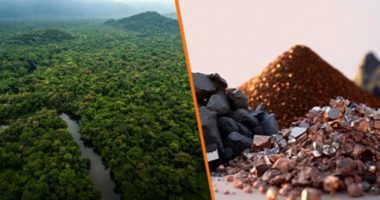- Soil geochemistry by Green Critical Minerals (GCM) has backed the presence of a 160 kilometre-long rare earth elements (REE) trend along its North Barkly Project in the Northern Territory
- A laterite soil profile by the company’s field crew now suggests an “immediate ionic clay REE target”
- A 100 metre-deep magnetic and gravity anomaly lies within the peak REE and metal trend, suggesting an iron oxide copper gold target
- Heavy spring rainfall limited the soil sampling work to 30 kilometres at the south-eastern end
- GCM shares were trading up 17.7 per cent at 2 cents at 3:00 pm AEDT
Results from soil geochemistry has backed Geoscience Australia’s findings of a 160 kilometre rare earth elements trend on Green Critical Minerals’ (GCM) North Barkly Project in the Northern Territory.
Geoscience Australia’s detection of the rare earths and uranium trend was first announced in May.
More recent spaced soil sampling by the company’s field crew identified an “immediate ionic clay REE target.”
The company said persistent and heavy spring rainfall created “boggy conditions,” restricting the sampling to the most south-easterly 30 kilometres of the planned program.
However, 65 samples were still collected, processed and analysed in line with Geoscience Australia’s method.
Green Critical Minerals reports results returned with the same level of rare earths confirming “the potential for a very large ionic clay REE deposit at a shallow depth, most likely less than 30 metres”.
The company went on to say such a deposit would be expected to be present as a blanket underlying the environs of the surface area rare earths trend.
A magnetic and gravity anomaly lies at 100 metres deep within the peak REE and metal trend, presenting an iron oxide copper gold target.
In 1995, mining giant BHP Group (BHP) drilled nearby, encountering a copper, lead and zinc anomaly, including sulphides from 90 metres to 400 metres. BHP did not assay the top 90 metres of the drill hole, nor check for REE.
GCM said it now plans to extend soil sampling to the north-west early in the next dry season, with more detailed sampling over the modelled IOCG targets.
GCM intends to drill the IOCG target, initially to test the laterite soil profile for clay hosted ionic rare earths, but also for deeper base metals and gold. The timing will depend upon access agreements, weather and rig availability.
GCM shares were trading up 17.7 per cent, trading at 2 cents at 3:00 pm AEDT.








